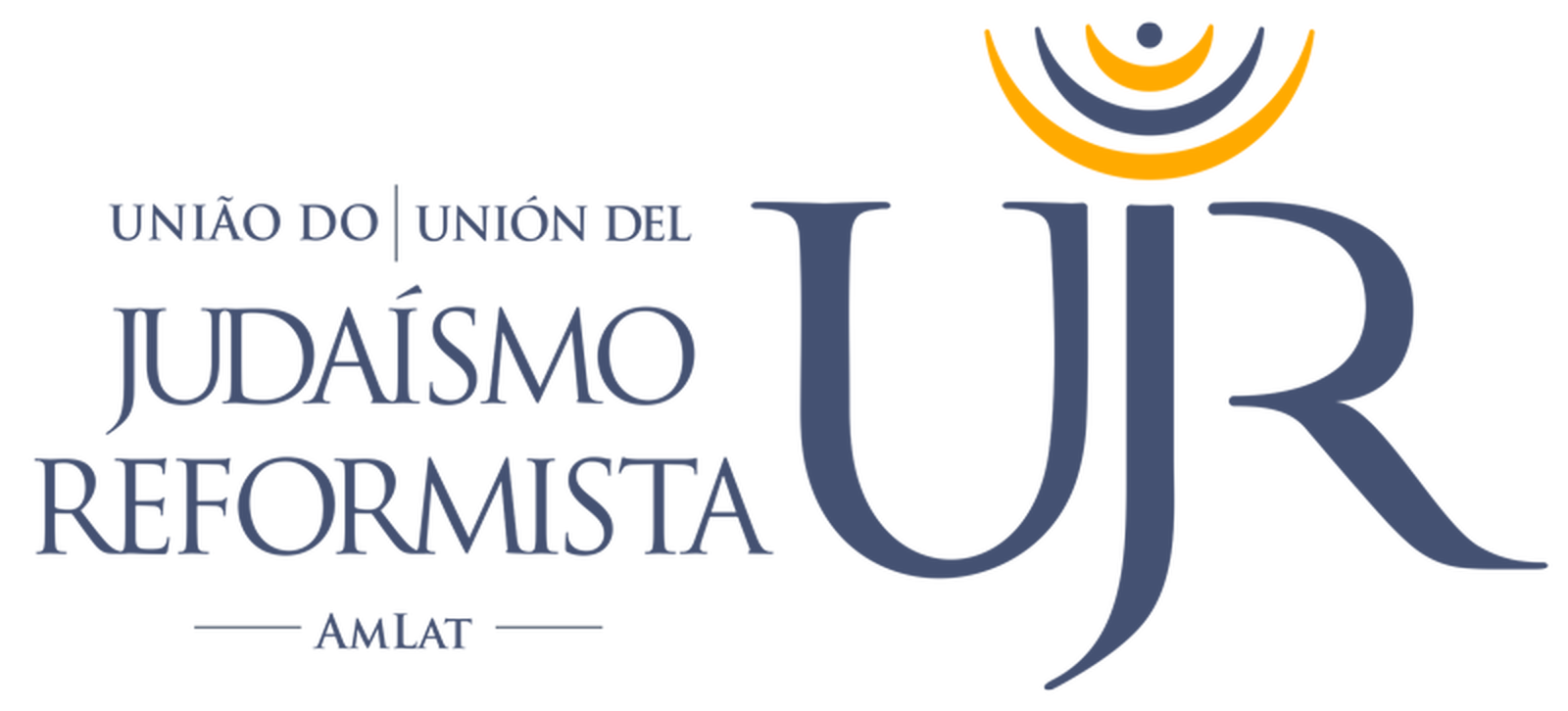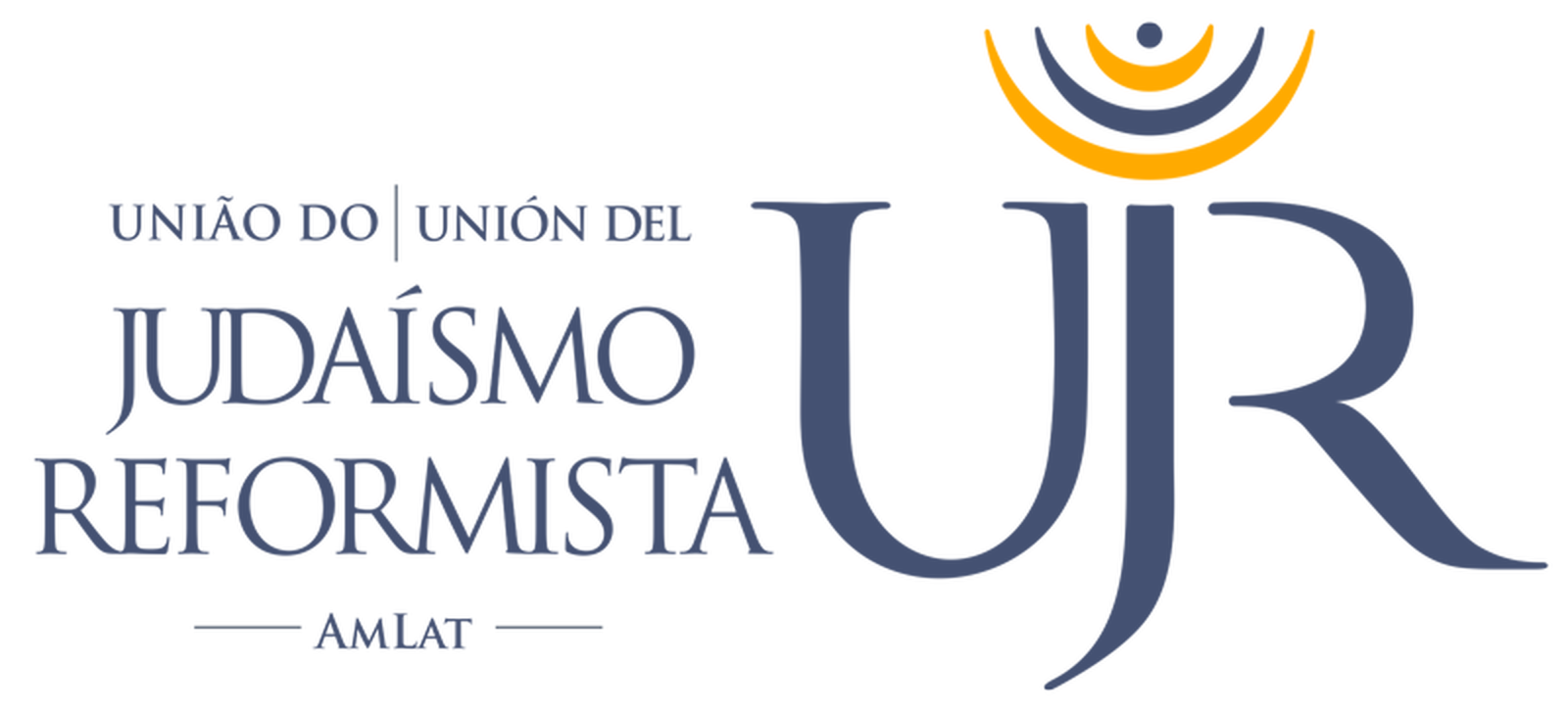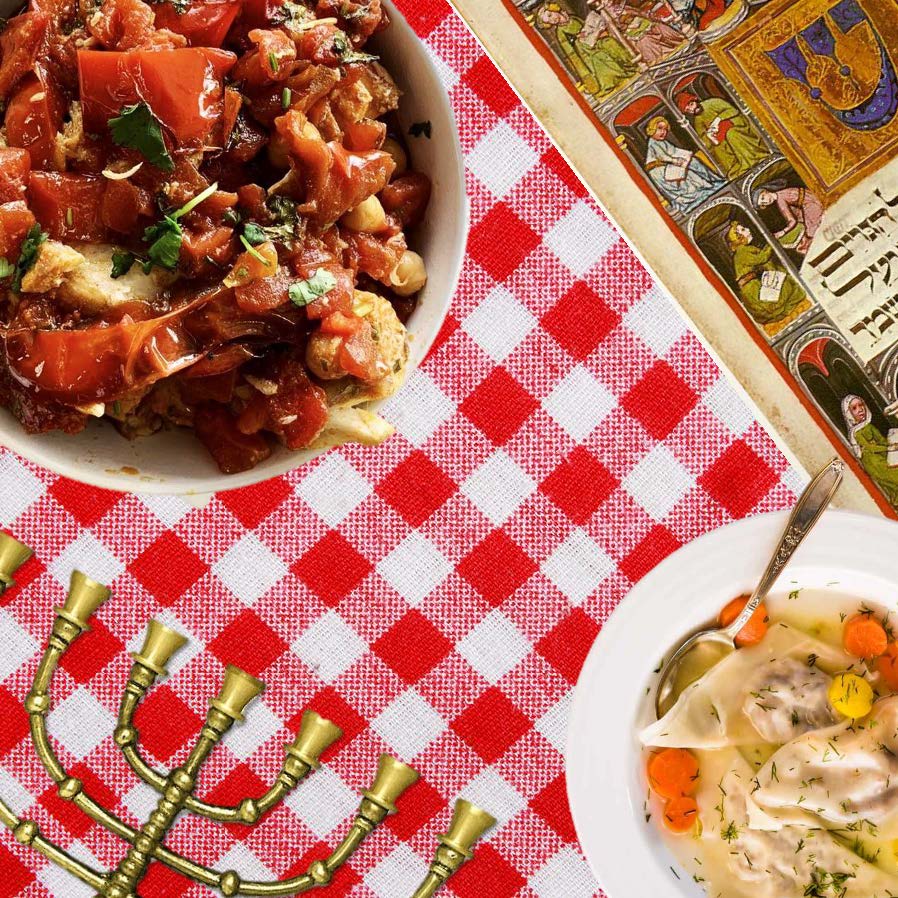Why stick with just kreplach when I can also eat “pescado trocho”?
By Yael Cobano
I am being a privileged witness of a new meeting of cultures in Spain. And by that I don’t mean Jewish with other cultures, but a meeting of cultures within Spanish Judaism, which is having an impact on my community: the Reform Jewish community from Madrid.
This meeting that questions what it means to be Jewish reminds me that the meeting of cultures is very Jewish. I bear in mind that the meeting of cultures has occurred many times, however, it has not been experienced in this part of the world for a long time. Furthermore, when it happened here it did not happen with the characteristics that I am going to describe because the course of historical events was very different.
It is in my young beit haknesset, the Jewish Reform Community of Madrid, which is only seven years old, that the mixing has been taking place without any problems. Among our members and regulars we have people of different nationalities who carry, in turn, several Jewish traditions: Moroccan Sephardic, Turkish Sephardic, Mizrahi and Ashkenazi from different origins. We all know: an Argentine Ashkenazi is not the same as an American Ashkenazi; it is neither in terms of idiosyncrasy nor in terms of liturgy or gastronomy, to name just a few examples. The evidence seems to tell us that there is no Jewish uniformity.
So, fortunately, in my community we value customs and melodies, which cross different traditions, mixing what we firmly believe belongs to everyone, and not just to a few: the heritage of our many “Jewishnesses”.
As we felt to a certain extent that we were neither one thing nor the other, we had a certain degree of discomfort, as if we had to opt for a definition; and walking with this discomfort, it became part of our ohel, our tent.
And this whole rich dimension of the idea of what is Jewish is becoming more and more accentuated. The encounter between local Jews and Jews who migrated for economic and social reasons from different parts of the world, especially from South America, but also from Central America, Turkey and the United States allowed each of these people to share their baggage, impacting on the Jewish dimension.
This meeting, which today seems natural and fluid, and which happens gradually, was not the usual trend around here lately. It is not the intention of this article to delve into history, but to relate how the course of history brought together Jews of different origins and traditions and then separated them or, better said, compartmentalized them.
Spain has a recent history in terms of modern Jewish life. For five hundred years after the expulsion of the Jews by the Catholic Monarchs there was no Jewish life, and this is not trivial; it was only in the 1869 Constitution that non-Catholics were allowed to live here.
The pioneers who settled in Spain in the first decade of the 20th century, and who were the driving force of the future Comunidad Israelita de Madrid, were called Weisweiller, Bauer, Salzedo, Gommes, Camondo, Mansberger, Farache, Pereire. They built the community together. Although prayers were held in the private homes of bankers Salzedo and Farache, among others, finally with the support of Bauer Landauer and the Krauss, the Midrash Abarbanel was opened in 1917. This place welcomed the Sephardic rite and the Ashkenazi rite. Even with different rites, it seems that they were united.
With the Second Republic and until World War II, hundreds of German and Polish Jews arrived in Spain fleeing the Nazi regime. In the early years of the Franco dictatorship, 1939 and beyond, Catholicism made Jewish life difficult in many ways. Freedom of worship was prohibited, so that neither prayers nor Jewish holidays were allowed, and private houses were used again. In 1948, Bauer, Lawenda and Cuby managed to open another prayer hall, which once again brought together Jews from different cultural traditions.
If within the same building, there were two rites coexisting “when possible” this is due to a time of survival. The will to survive and give dignity to the diverse Jewish community at the time led a Sephardic rabbi to officiate at Rosh Hashanah, thanks to the generosity of Temple Emanu-el in New York, in parallel with an Ashkenazi rabbi, chaplain in the US Navy. It seems that the sum of our experiences and political and social events allowed us to be more creative when working towards a common goal: the survival of the community itself.
The dictatorship wanted, to a certain extent, to get closer to Jews of Sephardic origin, but it was very suspicious of those who, without having Spanish nationality, emigrated. They suspected that they could be agents maneuvering in favor of vested interests. So much so that one of the requirements to authorize the constitution of the Sephardic Community of Madrid in 1955 was that all members of the steering committee were Sephardic Jews of Spanish nationality or Sephardic Jews from the Spanish Protectorate of Morocco. Perhaps this factor has timidly begun to determine the prevalence of one group over another.
The 1960s were very important for the development of Jewish life in Madrid, as Spain went from being a declaredly Catholic state to the approval of the Religious Freedom Law in 1967. With the independence of Morocco and the end of the Spanish protectorate, large flows of Sephardic Jews came to the country. As the book Ledor Vador mentions, the new leaders dreamed of a Jewish community in Madrid that revived the traditions of the glorious past of Spanish Judaism.
Between 1973 and 1976, Jews from Argentina, Chile and Uruguay emigrated to Spain. This was repeated in the early 1990s and in 2001, but only with Jews of Argentine origin, who brought a strong Jewish cultural experience, also marked by well-known rabbinical figures. According to Ledor Vador, “Latin American Jews were initially reluctant to join the existing community because they saw it as too traditional and religious“. The text manifests that the same reluctance existed in the local community, as the text quotes: “From an objective point of view, integration would be mutually enriching, but people were cautious about the convergence of two different views and cultures: most of the Madrid’s Jewish community, which had Sephardic Moroccan origins, was religiously and culturally opposed to Argentines”.
The shared spaces were fundamentally the Jewish school and Macabi. But the sharing of common spaces did not imply, nor does it currently imply, sharing common, exposed, and manifest cultures with the aim of welcoming and confirming the existence of the other. I don’t have any judgment about it, it just happened like that.
Nor can I determine to what extent one did not leave room for the other and vice versa or if, ultimately, it was decided to preserve the “to each his own” idea. And I insist, I do not judge it. However, if our systemic composition maintains this exclusionary compartmentalization, this will put our medium and long-term survival at risk.
There are exclusions that originate from Judaism that adopt a unique discourse, but there are other exclusions that go through unsuspected dimensions, such as the dimension that involves gastronomy, since the quality of the other’s food is part of the Jewish humor: “How am I going to share a community with someone who doesn’t know what kreplach is?” This exclusion, which is real, was not only made against the Sephardic, but also for that Jew by choice to whom no one had told about this dimension of Jewish identity. It gets to be something like “I’m not going to make you try kreplach, I’m not going to tell you what it is, nor what it evokes in me; instead, I’ll throw it in your face that I blame you for not knowing and make this the perfect reason to delete you from my space.”
For others, the dimension of being a Jew goes through meldar (“to study” in ladino); so that in our Jewry this is also a reason for excluding the other and a pretext for not sharing prayer spaces, as they “don’t meld like we do”; or: “you don’t do the tefillah like I did in my childhood with my bubbe.” All of these say: “What you do reflects who I am, but I feel that by changing I am betraying my family and their memories.”
It is true that identity is constructed largely by ingrained memories. Says the writer Jonathan Safran Foer, in his work “Everything Is Illuminated”: “Jews have six senses: touch, taste, sight, smell, hearing… and memory. Whereas non-Jews experience and process the world through the ordinary senses and use only memory as a secondary resource, for Jews memory is not secondary to the prick of a pin; in its silvery sheen or in the taste of blood that comes from the fingertip. The Jew sticks himself with a pin and remembers other pins. The puncture site evokes other punctures – when your mother tried to mend your sleeve with you wearing the garment, […] when Abraham tested his knife to make sure Isaac would not feel pain – because the Jew can know why that hurts. When a Jew comes across a pin, he asks: what memory does it have?”
And I don’t deny it, it’s beautiful to be rooted in one’s own traditions and memories. However, the exclusionary attachment arises when Jews who think they own the truth consider that the Jewish way of being includes only what they do. Whatever is different is not “Jewish style”. And this argument is used for exclusion, denial or contempt. My question here is: what is the Jewish method if not to keep everything we’ve done and claim we’ve always done it this way? I wish that pin that sticks in us evokes in us the mixture of what we are collectively.
If in my community we go from one nussach to another; if we have guefilte fish beside the pescado cocho; if “Gut Shabes” is heard; or if we bring the Sephardic songs to the Seder and to Rosh Hashanah; if we celebrate Mimona when few know about this Moroccan tradition of ending Pesach, the Jewish sense can be the encounter, the exposition of our many Jewish cultures. This may seem trivial to some, but for others it’s the cultural melting pot experience that we are. We talk a lot that denominations are obsolete in Judaism, but we tend to mix contexts of diversity and say that homogeneity is obsolete.
Precisely, I started by saying that I am being a privileged witness of a new meeting of cultures that wants to build a new Jewishness that incorporates everyone, with the desire to be different. Not to nullify something, because this transforms it, but to embrace it. There can only be a new Judaism in this mix if everyone is open to the beautiful Jewish tradition of change.
It seems to me that alterity is the full awareness that Judaism was never the same and that it could survive by accepting the existence of the other. This alterity is not only – if I may be redundant – that of the other, but also our alterity perceived by others. There is otherness, whichever way you look at it. I want to review a great precedent when traditions mix.
“When the Torah was forgotten in Israel, Ezra restored it; when it was forgotten again, Hillel came from Babylon and restored it.”
How much of the Judaism of the reconstruction period – at the time of the Second Temple – is the Babylonian tradition brought over by the exiles who made it theirs and then made it the tradition of all? There was no possibility of subsistence without changing reality.
Rabbi Damian Karo said in his article in this magazine: “The Jewish model is one of renewal and adaptation. This is how Judaism managed to make the transitions from one age to another; from the First Temple to exile, thence to the restoration of Second Temple sovereignty and time, thence to Rabbinic Judaism, from Rabbinic to Medieval, from Medieval to Emancipation,” to name but a few examples. In each transformation, the Jew was rediscovered and redefined.
How is it possible that, when survival and construction with dignity were at stake, there was creativity for the mix and in times of certain stability we find divisions?
What the quotation from Sukkah 20a suggests is that sustaining Judaism after the exile was not sustaining Judaism, but sustaining oneself, surviving. To support the place of worship, the spiritual center, is to support yourself as a people, because if you don’t, outsiders will devour you. The rebuilding of the Temple had to do with emerging during domination so as not to end up devoured by the culture of the other. If we have forgotten the Torah, it is because we are no longer here, and we have forgotten Judaism.
I began this article by saying that I am a privileged witness to a new encounter of cultures within Spanish Judaism, like what happened in the late 19th and early 20th centuries, and which is being reflected in the reform Jewish community that I founded.
Probably the reform movement provides a framework for exchange and coexistence because coexistence with the other can transform me and produce a new culture, common to all, but equally new. This is typical of reform in that there is no fear of change, rather change is what is sought.
But what I see in my community, which is under construction and being born with people from different roots and origins, is that the component that makes it possible is not reformist, but humanist. What makes the difference is a much more universal idea. It is to recognize the other as another, which is independent of their Jewish tradition and roots. The Jew who recognizes an equal in the other, beyond differences, does not reflect Jewish diversity, but his humanist component of recognizing the other. That’s the real challenge. The feeling is that a community that was born mixed in the meeting of cultures is no longer like that, it seems to tell us that the look of the other has been lost and they only recognize equals. The chance of survival of this Jewish experience is not because we continue to bring different people, but because we continue to recognize ourselves as equal in difference, always, from the first day, showing what is human.
Those who came from exile in Babylon did not leave Babylon behind, they brought it with them. Do not nullify the other, the difference. The humanistic component is reflected in respect for diversity and coexistence. The important thing is not, in the first instance, to recognize another as a Jew, but above all to recognize him as a human being with his dignity. From there we see how we walk.
And, ultimately, it is not Judaism that we are saving, but humanity. The idea of trying to live together in diversity and recognize the dignity of the other does not create a reform Jewish community but sustains what is human. And, by the way, the human was always ahead of the Jewish idiosyncrasy. Indeed, the risk of others is to forget what is human and remain in the minutiae of a certain halacha – which is not its greatness. If mixed experience is placed where things arise and settle down; if prominence is placed on the dignity of the other, the survival of the Torah is assured.
Emmanuel Lévinas proposes a new humanism in his work “Humanism of the other man”. Lévinas’s attempt is resolved in thinking from the other: conceiving exteriority as the condition and origin of all thought. The Other is immeasurable, it is the absolutely other, and it is always prior to subjectivity itself.
=====
Yael Cobano is a rabbinic student at IIFRR – Instituto Iberoamericano de Formación Rabínica Reformista – and founder of the Reform Jewish Community in Madrid. She is a lawyer, with a master’s degree in intelligence analysis.


